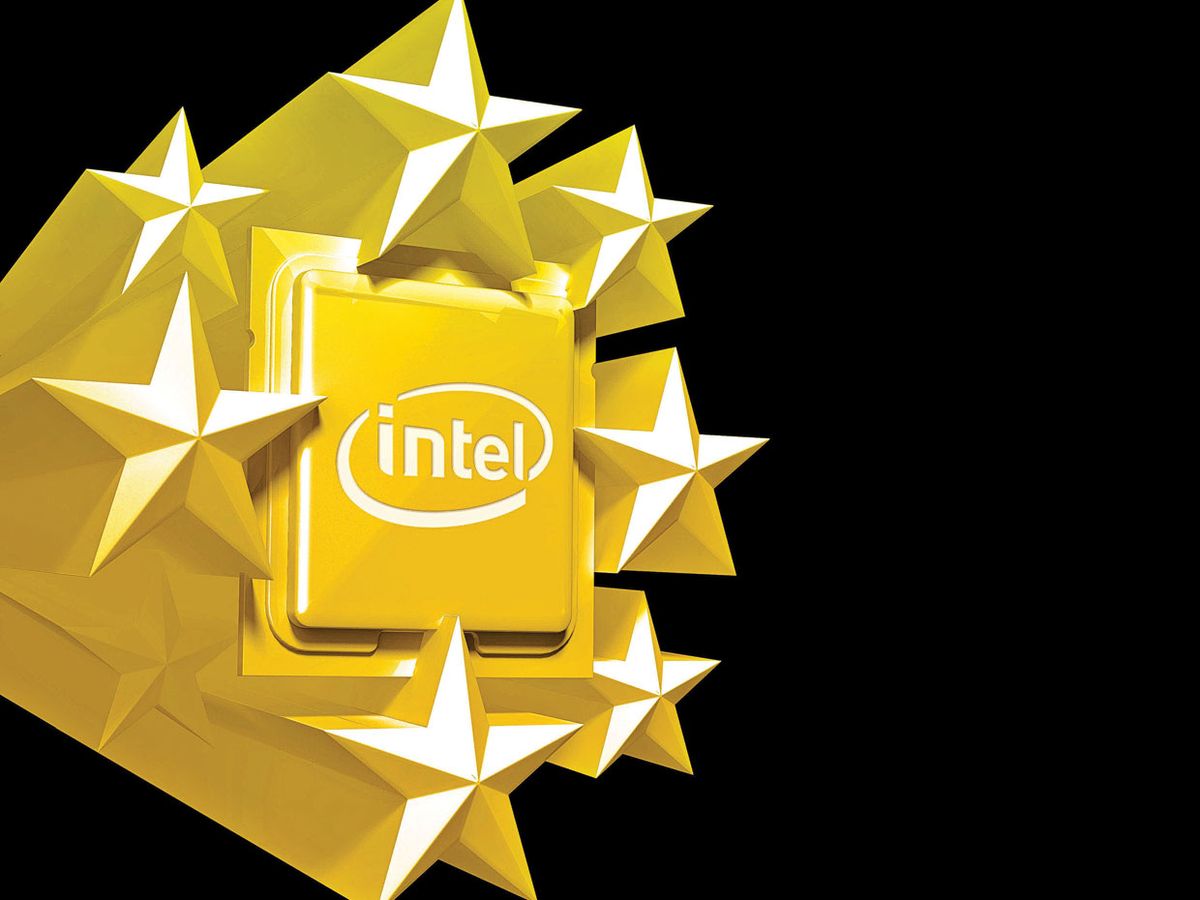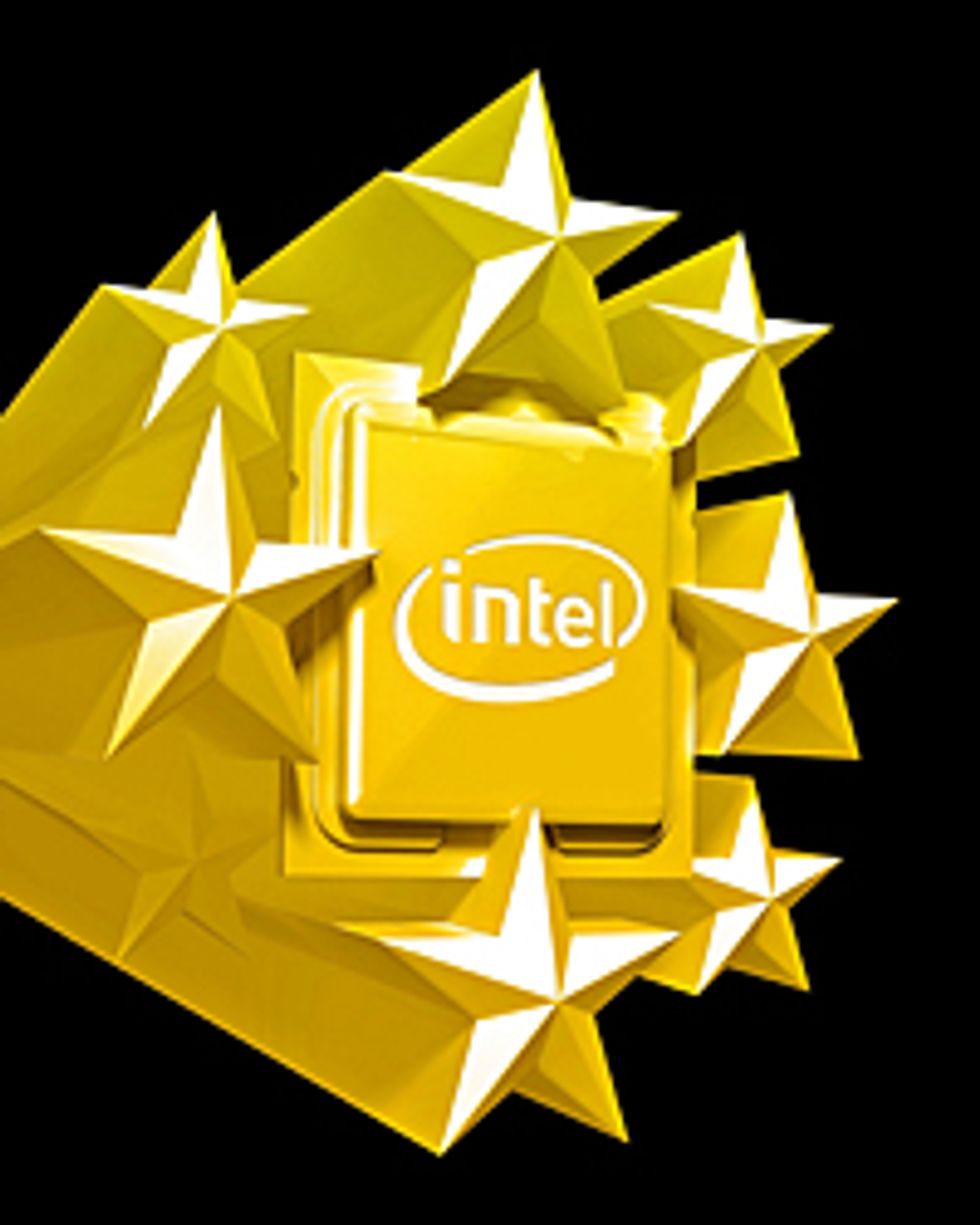Intel Inside…Your Smartphone
With Silvermont, the chip giant may finally get a grip on the mobile market


For a long time, the message from smartphone makers to Intel could have been summarized in a short text: “ur doing it wrong.”
Nearly five years after introducing its Atom line of chips for mobile applications, Intel is still just a bit player in that business. In 2011 it produced only 1 million of the 760 million chips sold for use in mobile devices like tablets and smartphones, according to the Linley Group. Although Intel has since made some new inroads, no significant improvement is projected for 2012.
The reason? Early Atom chips were essentially just stripped-down standard processors, too costly and power hungry to compete with the products of established mobile chipmakers like Qualcomm and Broadcom Corp. Maybe Intel just didn’t care, lulled as it was by the fat profit margins of its PC- and server-chip businesses.
Well, now it cares. PC sales are down, mobile sales are booming, and this year Intel will introduce a line of Atom chips, code‑named Silvermont, that analysts say will at last be truly optimized for low-power operation. Intel itself is saying very little.
The company’s actions speak louder than its words. Over the past few years, Intel has spent more than US $1 billion buying and licensing intellectual property for wireless circuits, image processing systems, and other parts for smartphones; inked partnerships with smartphone and tablet makers like Motorola Mobility and ZTE Corp.; and begun collaborating with Microsoft and Google to create chips that work well with their mobile operating systems.
One of the few things Intel has revealed is that Silvermont will have an entirely new microarchitecture—the circuit-level set of designs that determine how fast a chip can operate and at what energy cost. What’s still unknown is exactly how much the microarchitecture will change and whether it will be enough to make Intel a big mobile contender.
Over the years, Intel’s mobile design philosophy has evolved to look more like the one that has taken its competitors to the top. The main mobile processors use a design called system-on-a-chip (SoC), which pairs a central processor with specialized circuits for communications, graphics, navigation, and other tasks. SoCs save energy because they use dedicated systems that are packed closely together.
The early Atom chips relied instead on a general-purpose processor to perform all these tasks, with correspondingly poor power performance. The typical power budget for the main processor in a smartphone is1 watt; the original Atom used that much even in an idle state. “They were trying to optimize for smartphones, but they didn’t have too much experience,” says Linley Gwennap, who heads the Linley Group.
But it seems Intel has learned its lesson. In 2012, it released the first Atom chip with a system-on-a-chip design, code-named Medfield. Shreekant Thakkar, an Intel Fellow and the chief platform architect in Intel’s Mobile and Communications Group, says the new chips burn no more power than do chips made using schemes developed by ARM Holdings, the British firm that licenses basic circuit designs to nearly every smartphone processor maker. The new chip has been attractive enough to be picked up by Motorola and Lenovo Group, among others. The first smartphones with Intel inside shipped in 2012.
Although Medfield is built using the company’s older, 32-nanometer manufacturing process, that was good enough to let Intel leave its power-hogging problems behind. But, says Gwennap, being as good as the established product isn’t good enough. “You have to be as good and find one thing you can do better,” he says.
That may be where Intel’s signature advantage in manufacturing comes in. The company has typically led the industry, releasing next-generation chips with finer features—and thus faster and less-power-hungry transistors—sometimes years before everyone else.
So far, Intel’s mobile chips have lagged a couple of years behind Intel’s speediest microprocessors, Gwennap says. The company’s most advanced chipmaking lines have traditionally been dedicated to churning out higher-margin PC and server chips, producing mobile chips once the initial investment in the manufacturing process has been more or less paid off.
Silvermont has been put on an accelerated schedule; it will emerge from Intel’s top-of-the-line 22-nanometer fab only a year or so after the company’s top microprocessors. That could give Intel a considerable edge in power consumption; the company says that its 22-nm Atom chips, all else being equal, will consume at least 30 percent less power at the transistor level than its 32-nm predecessors. Foundry giant Taiwan Semiconductor Manufacturing Co. (TSMC), which makes chips for many of Intel’s competitors, is a generation behind; the Taiwanese firm didn’t begin shipping 28-nm chips, which are roughly equivalent to Intel’s 32-nm chips, until 2012.
But Intel may need more than manufacturing prowess. It’s one thing to have the smallest, most efficient transistors. It’s another thing to put them together into a speedy, energy-efficient package. Analysts say Intel has been at a significant disadvantage because it has created its Atom chips by paring down a microarchitecture that was designed for PCs rather than building the chips from scratch. To compete, Intel will likely have to overhaul its microarchitecture and work hard to optimize it to run Android, Google’s operating system for mobile devices, as well as mobile versions of Windows. Intel has said it is working with both companies on its mobile offerings.
Other challenges lie outside the processor. “A smartphone contains much more than a microprocessor: It contains a variety of accelerators for graphics, video, audio, wireless, GPS—all of which are complicated pieces of hardware,” says Arvind, a professor of computer science and engineering at MIT (who goes by one name). Intel’s microprocessor prowess, says Arvind, “can be easily overshadowed by a company with inferior technology if that company offers a more complete solution for smartphone or other mobile devices than Intel does.”
Intel wouldn’t reveal a thing about the redesign of Silvermont. So we asked outsiders who are in a position to make an intelligent guess.
When asked to daydream about future Atom chips, Subhasish Mitra, an associate professor of electrical engineering and computer science at Stanford (and former Intel employee), says he’d like to see the company use more so-called accelerators, microarchitectures that can break up programs into multiple chunks that run in parallel, or in other less straightforward ways, to go faster or save power or both. The original Atom chips already used some of these strategies, but he says they could be optimized for mobile software to get more bang.
Even with all the technology in place, Intel could still face a hard climb from the bottom of the mobile pack. The economics of the mobile chip industry can be unforgiving. Smartphone chips typically sell for a quarter to a third as much as a PC processor, says Sergis Mushell, an analyst at Gartner. Today’s mobile chip giants have many years of experience at driving down costs, and they have the advantage of sizable market shares to make up for the tight margins.
But Mushell points out that Intel has something its competitors lack: vertical integration. Intel designs and fabricates its own chips, whereas other companies have to pay a foundry like TSMC. Although Intel has the added overhead of operating its own wafer-fabrication plants, it will continue to make higher-priced chips on the same equipment, which could help improve its margins in the mobile market.
Today’s mobile giants could be facing an even bigger threat in 2014, when Intel says it plans to move all of its chips—for PCs, servers, tablets, and phones—to a 14-nm manufacturing process. The cost would be high, but the payoff could be higher still, if it puts the company two full generations ahead of the competition. If Intel pulls it off, it could be a formidable mobile competitor.
About the Author
Katherine Bourzac is a freelance writer based in San Francisco, Bourzac hunted down analysts and academics to find out whether Intel, known for its high-performance chips, might transform itself into a fleet-footed mobile contender. The investigation gave her a new appreciation for the technology behind today’s smartphones, she says. “It also convinced me it might be time to get a new one.”
